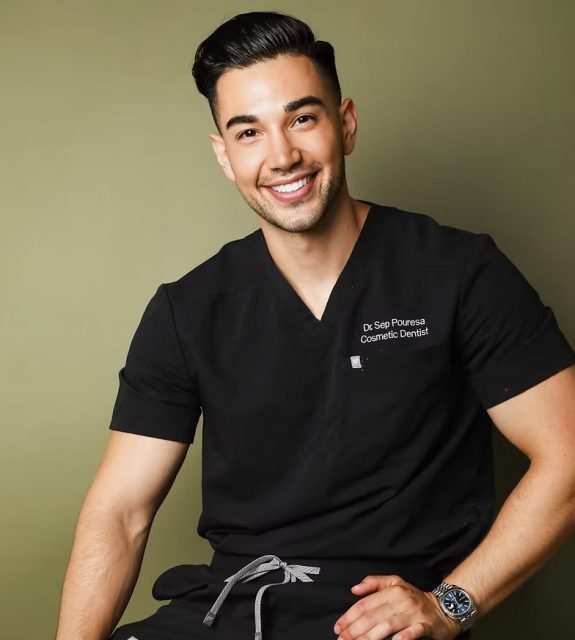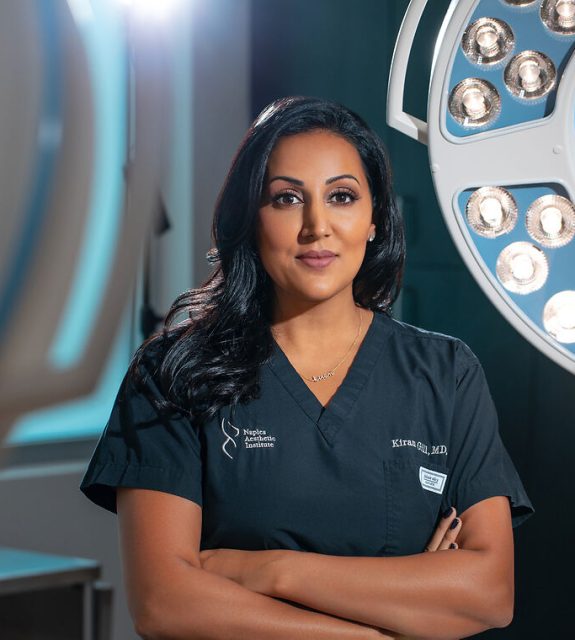Maren Morris recently tweeted ‘small boobs are cool,’ but if you find yourself dreaming of cleavage like that of the bikini-clad girls on social media, a breast augmentation might be on your mind. Although it's a very popular procedure, you may have lingering questions before scheduling your appointment. Here, Haute Beauty's breast experts describe five important things to know about breast augmentation.
 Photo Credit: Shutterstock
Photo Credit: Shutterstock
Haute Beauty: What should one consider when deciding on implant size?
Dr. John Layliev: When deciding on implant size, it’s critical to have a number of methods that will simulate how the implant will look on the patient. So, for instance, using Vectra 3D imaging software, which I have in the office and which a lot of plastic surgeons do, but not everybody, you’re able to simulate a 3D picture of the patient’s actual chest and breast and show them what the implants will look like on their chest, so specifically different sizes and different projections. On top of that, actually trying on sizers on their breast, to see what that will feel like on their body. Using those two I think that will give the patient the most accurate idea of what size they’ll feel comfortable with as far as choosing what’s going to aesthetically look best on their body.
HB: How do you deal with someone insisting on a size you know isn't best?
JL: I tell them that every chest has a certain limitation for the size that can be safely implanted. I determine this limited by measuring the base width, or the width of their chest that can support the implant, and how thick their skin is. So with patient education, specifically explaining that if they're choosing an implant size bigger than their chest can safely adapt to, then they're guaranteeing the risk of complications, like implant malposition and the need for revision surgery. Usually, patients understand after I explain this to them and then they level down to more reasonable implant size.
HB: How should a surgeon be chosen?
Dr. Rian Maercks: If you’re considering breast augmentation, the most important decision you’ll make is who will perform your procedure. Don't choose a breast surgeon based on price. You cannot put a price on safety and great results. Additionally important is the type of results you're looking for. For example, my patients look for natural-looking breasts, so I created a technique called "Cold Subfascial Breast Augmentation". The implants are placed subfascially, giving a naturally draped appearance of the superior pole of the breast and providing enduring implant support for the longevity of the aesthetic result. A more natural appearance of the breasts is achieved with the fascia supporting the implant, avoiding weight and pressure on the breast envelope. An additional benefit is that the breasts will not change shape with arm movement as they would with standard subpectoral and dual-plane techniques. Finally, it's important to be aware that no matter what surgeon you choose, complications can always happen during surgery and revisions have to sometimes be considered.
HB: What does the healing process look like?
Dr. Gaurav Bharti & Dr. Bill Kortesis: Of course, everyone is different, but generally speaking, moving around is good because it keeps you from getting stiff and helps relax the muscles. Avoid narcotics if possible and instead, use NSAIDs and over-the-counter meds. For clothes, wear soft support garments. Always follow your doc's instructions! Try to eat and drink healthy. Avoid high salt and drink plenty of water. Don’t worry about bloating after surgery. It will go away!
HB: Should implant type be individualized?
Dr. Gil Altman: Every case is unique and one should always base the implant on the individual's anatomy and desired look.
HB: What’s your top tip for reducing scarring?
Dr. Ran Stark: Scarring largely depends on a patient's genetic make-up. Most of it is out of anyone’s control. The good news is that the initial appearance of a scar is not set in stone. Over the course of a year, scars will remodel and continuously get better. However, there are a few techniques to ensure that we give the skin all the tools it needs to heal in the best manner possible. Some are the responsibility of the patient and some depend on the surgeon’s technique. First and foremost- don't smoke! Tobacco is known to hinder healing. Secondly, optimal nutrition with a high-protein diet is key. Third, minimize physical activity during the healing process. Applying sunblock with zinc oxide will protect the skin from the sun’s rays and reduce scar discoloration. Once the wound has healed silicone creams and strips may be applied to the scar to improve its appearance. Lastly, lasers and light therapy have become increasingly popular in helping to improve the look of scars by decreasing the size of the scar tissue itself.





















